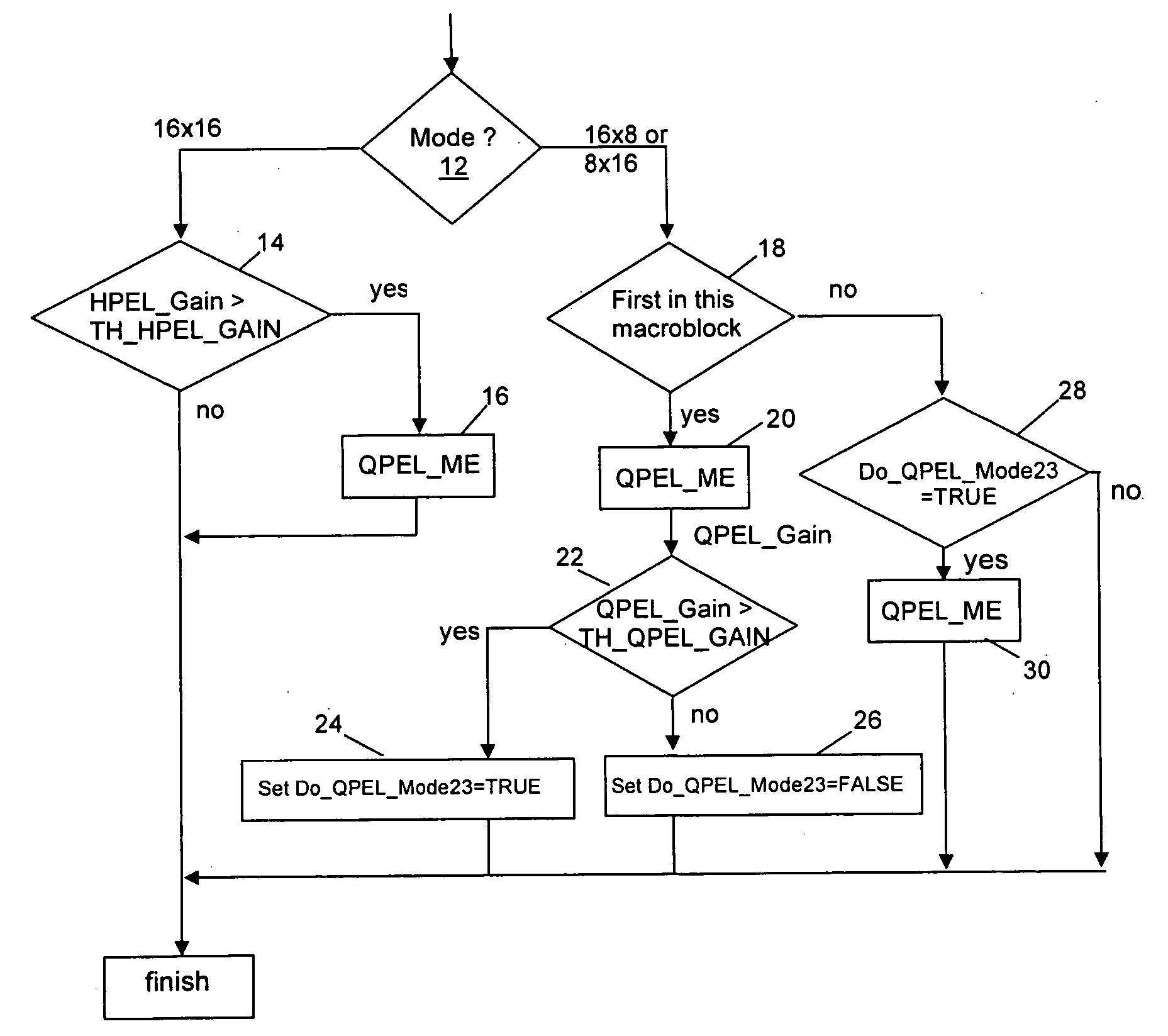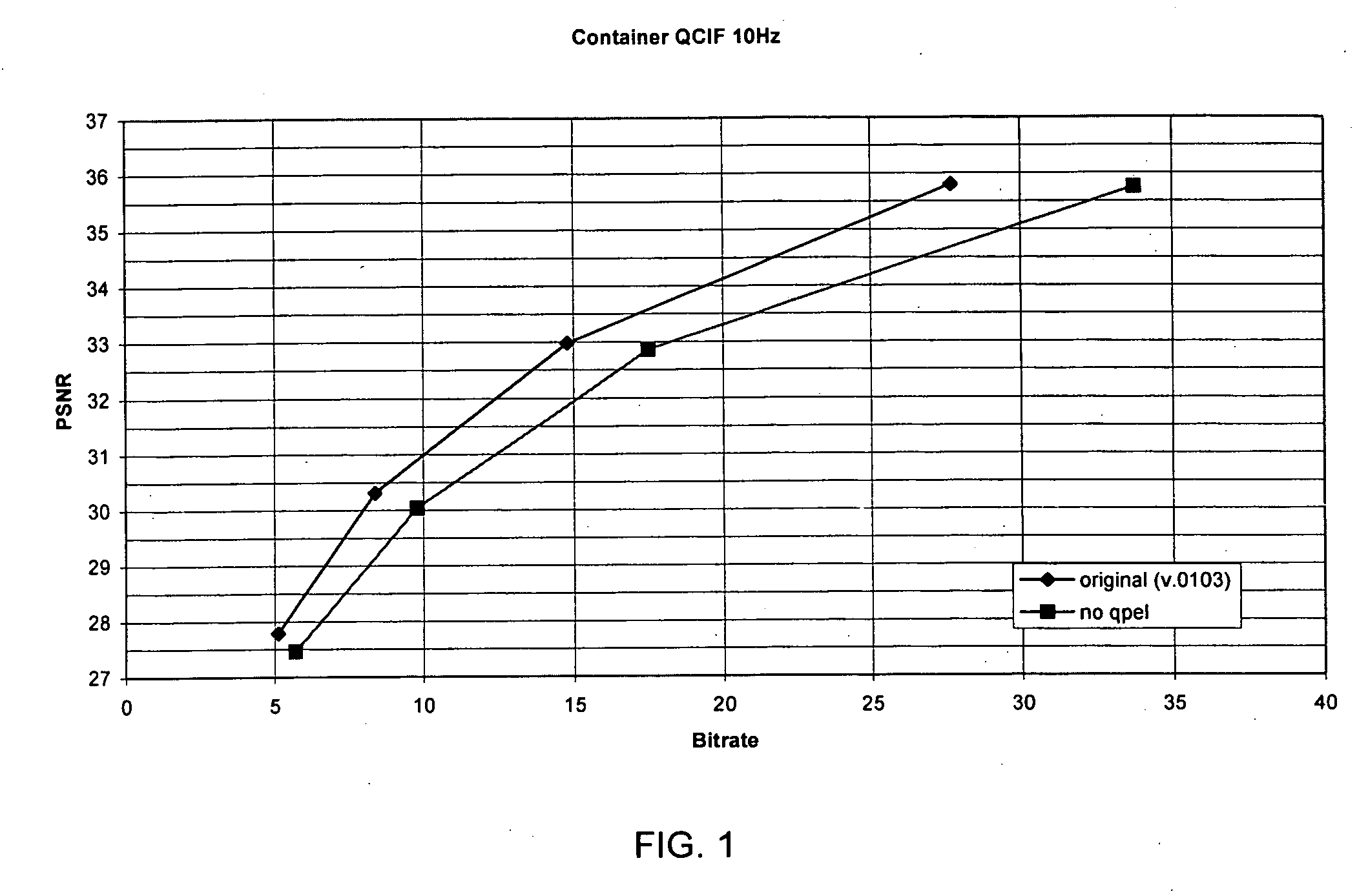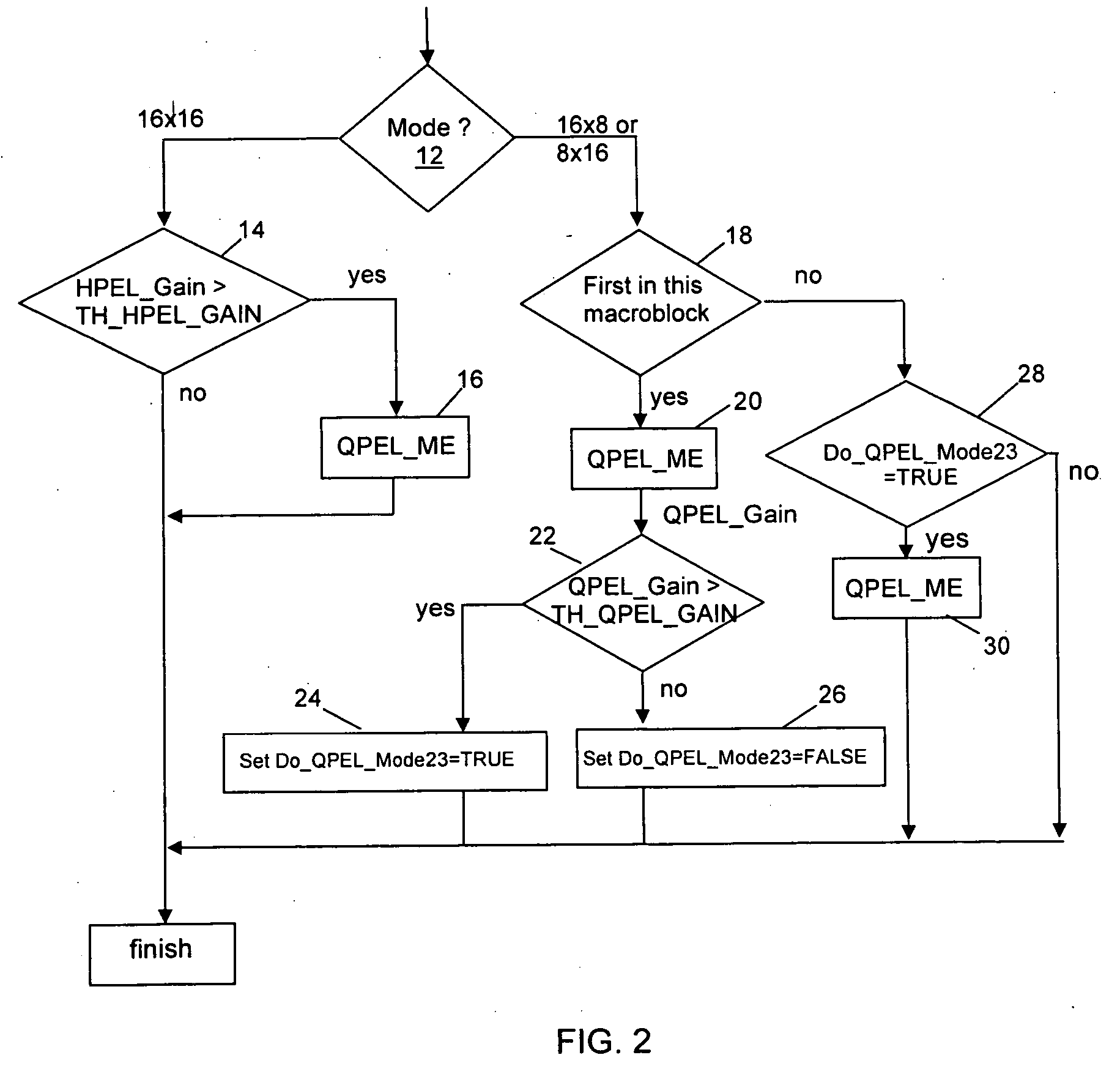Fast partial pixel motion estimation for video encoding
a motion estimation and video encoding technology, applied in the field of video encoding methods and systems, can solve the problems of large amount of computational cycles for video encoding, motion estimation is computationally expensive, and the encoder in an embedded environment is computational resource, so as to reduce the number of quarter-pel motion estimations and reduce the cost
- Summary
- Abstract
- Description
- Claims
- Application Information
AI Technical Summary
Benefits of technology
Problems solved by technology
Method used
Image
Examples
Embodiment Construction
[0028]FIG. 1 illustrates a graph depicting rate-distortion (RD) performance of an encoder with and without a quarter-pel motion estimation. The graphs are measured in average bit rates and average PSNR for each test sequence. PSNR refers to the peak signal-to-noise ratio of the reconstructed image. The PSNR of each image in a video sequence can be determined from the mean squared error (MSE) of a reconstructed image according to the equation:
MSE=(Σ[f(i,j)−F(i,j)]2) / (M*N)
where f(i,j) is a source image containing M by N pixels and F(i,j) is a reconstructed image where F is reconstructed by decoding the encoded version of f(i,j). The summation is over all pixels. PSNR of a reconstructed image in decibels (dB) is computed by using the equation:
PSNR=20 log10(255 / RMSE)
where the root mean squared error (RMSE) is the square root of MSE. The average PSNR of reconstructed video is typically in the range between 20 and 40. The actual value of PSNR is an indication of the quality of the r...
PUM
 Login to View More
Login to View More Abstract
Description
Claims
Application Information
 Login to View More
Login to View More - R&D
- Intellectual Property
- Life Sciences
- Materials
- Tech Scout
- Unparalleled Data Quality
- Higher Quality Content
- 60% Fewer Hallucinations
Browse by: Latest US Patents, China's latest patents, Technical Efficacy Thesaurus, Application Domain, Technology Topic, Popular Technical Reports.
© 2025 PatSnap. All rights reserved.Legal|Privacy policy|Modern Slavery Act Transparency Statement|Sitemap|About US| Contact US: help@patsnap.com



